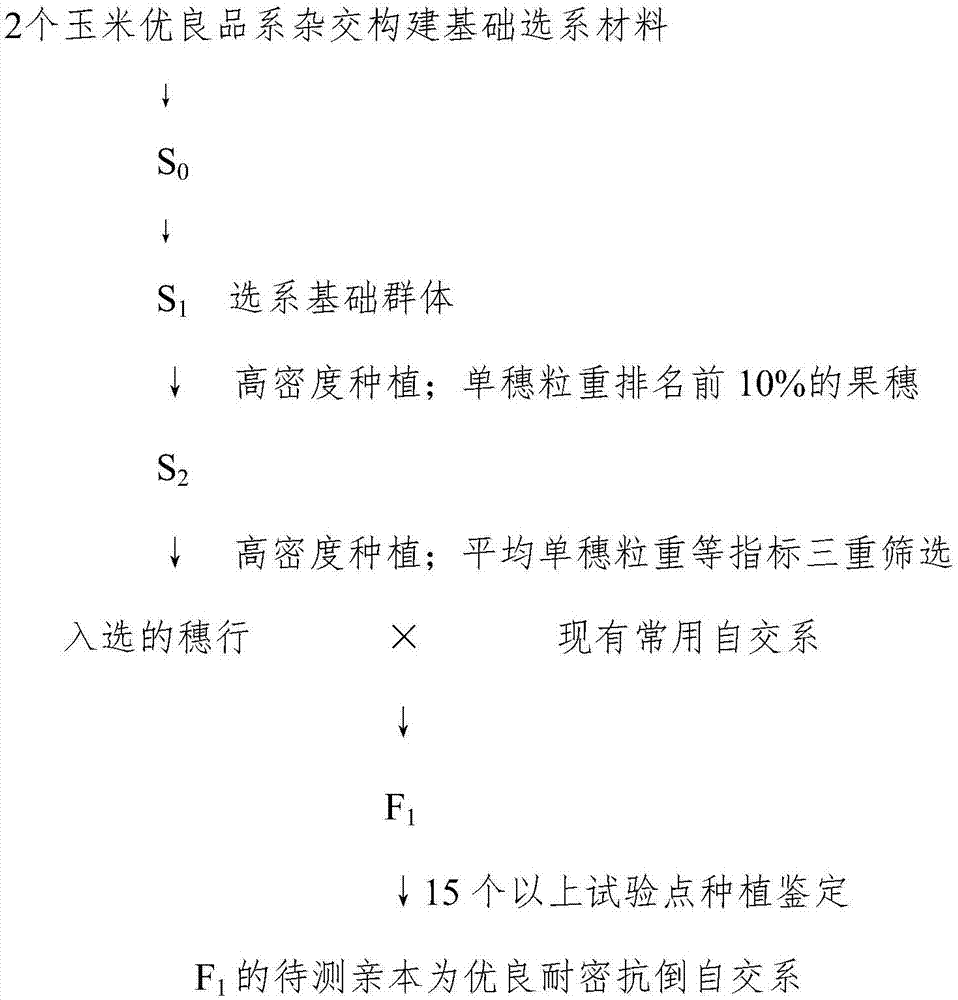One-hole-multiple-plants inbred line breeding method capable of enhancing density-tolerant property and lodging resistance of maize
An inbred line and lodging resistance technology, applied in the field of inbred line selection and breeding, can solve the problems of neglecting soil nutrient competition, density tolerance, poor lodging resistance, and inability to withstand density and lodging resistance material breeding, etc. The effect of density and root lodging resistance
- Summary
- Abstract
- Description
- Claims
- Application Information
AI Technical Summary
Problems solved by technology
Method used
Image
Examples
Embodiment 1
[0037] according to figure 1 The process of carrying out the comparison test of planting density in the breeding of maize density-tolerant and lodging-resistant inbred lines is as follows:
[0038] A. In Beijing in 2014, the inbred lines Jing 92 and Jing 2416 were crossed with each other to obtain the Jing 92×Jing 2416 hybrid combination, and the resulting hybrid seeds were planted to obtain S 0 100 generation plants were selected, and 50 well-grown plants were selected for bagging and selfing; 30 selfing ears were obtained, and the grains on them were used as S 1 generation seeds.
[0039] B.S 1 Generation begins to segregate traits, so it is called S 1 On behalf of the selected line of basic groups. The Beijing Xiaotangshan Breeding Base was planted according to 3 planting densities of 8000 plants / mu (2 plants per hole), 12000 plants / mu (3 plants per hole), and 18000 plants / mu (3 plants per hole). During flowering to S 1 The male and female coordinated individual plant...
Embodiment 2
[0052] according to figure 1 According to the flow chart, the planting mode comparison test of the selection and breeding of maize density-tolerant and lodging-resistant inbred lines is carried out, as follows:
[0053] A. In Beijing in 2014, the inbred lines Jing 92 and Jing 2416 of the Huanggai line were selected and crossed with each other to obtain a hybrid combination of Jing 92×Jing 2416, and the resulting hybrid seeds were planted to obtain S 0 100 generation plants were selected, and 50 well-grown plants were selected for bagging and selfing; 30 selfing ears were obtained, and the grains on them were used as S 1 generation seeds.
[0054] B.S 1 Generation begins to segregate traits, so it is called S 1 On behalf of the selected line of basic groups. In Beijing Xiaotangshan Breeding Base, planting was carried out according to the planting density of 12,000 plants / mu and the planting mode of 1 plant per hole, 3 plants per hole, and 5 plants per hole, with a row spaci...
PUM
 Login to View More
Login to View More Abstract
Description
Claims
Application Information
 Login to View More
Login to View More - R&D
- Intellectual Property
- Life Sciences
- Materials
- Tech Scout
- Unparalleled Data Quality
- Higher Quality Content
- 60% Fewer Hallucinations
Browse by: Latest US Patents, China's latest patents, Technical Efficacy Thesaurus, Application Domain, Technology Topic, Popular Technical Reports.
© 2025 PatSnap. All rights reserved.Legal|Privacy policy|Modern Slavery Act Transparency Statement|Sitemap|About US| Contact US: help@patsnap.com

